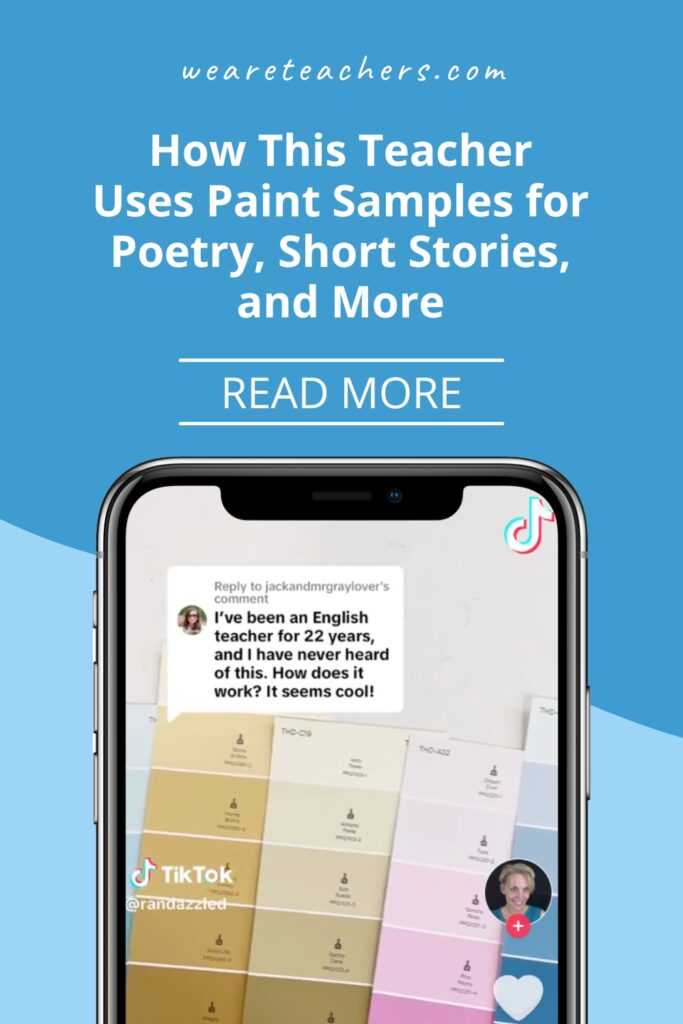English teachers never stop amazing us. In the most recent iteration of English teacher ingenuity, TikTok creator and teacher Laura Randazzo @randazzled showed us how she uses paint samples—yes, those free swatches from Home Depot and paint stores—in her classroom.
Check out her TikTok featuring this paint samples teaching strategy:
What we love about this paint samples teaching strategy:
- Paint samples are free. Enough said.
- They’re versatile. Clearly, they can be used for many different activities and across a wide range of ages and ability levels. The activities she mentioned would be so easy to adapt for students that need more or less support.
- The thrill in Laura’s voice when she hits the Walden Pond color. ADORABLE.
How Laura uses this paint samples teaching strategy:
- Paint chip poetry: Students pick any paint sample swatch they want, then create poetry using several of the color names (in Laura’s seven-color swatches, she recommends using four of seven).
- Super-short stories: Students write a 250-word short story using all seven words from the paint swatch.
- Vocabulary development: Teacher provides a pair of words that represent a range of a feeling or emotion (the examples she gives are “miffed” and “enraged”; “curious” and “obsessed.” In teams, students brainstorm the five (or however many) words that represent the middle range of the spectrum of color and arrange them by degree of strength.
Recommendations from other teachers:
Connotation:

Mood:

Business and advertising:

Other ideas for using this paint samples teaching strategy:
Rhetoric, persuasion, and thesis sentences: Give students a pair of sentences that jump in intensity (e.g., “I don’t think very many students like wearing uniforms” and “Student uniforms need to be eradicated from the dress code immediately”). Put students in teams to write sentences that represent the range in between, then explain what devices they used to develop a stronger thesis.
Creative writing: Give students a paint sample and write a “boring” sentence for the top color (e.g., “The water was blue.”). Have them write six more sentences, each building in intensity with descriptive language until they arrive at a showstopper sentence!
Setting and symbolism: (Note: This would work best with a set of single-color paint samples.) Have students choose three or four paint samples that represent significant colors in the book. Students can pull passages and direct quotes for support, connect color motifs to themes, etc. For example, Fahrenheit 451 would be largely white, black, and red, The Great Gatsby would be a lot of green, yellow, and gold, etc.
Get-to-know-you activity: Have each student pick a paint sample color. Ask them to invent the color name that represents an aspect of them or their personality and write a brief description why. Put all the paint samples together on a bulletin board as a “patchwork quilt” of your class.
Huge thanks again to Laura @randazzled for this great strategy. And don’t miss her idea for making your own New York Times–style Connections puzzles for the classroom!
Plus, check out more ways to use paint samples in the classroom here!
For more articles like this, be sure to subscribe to our newsletters.


